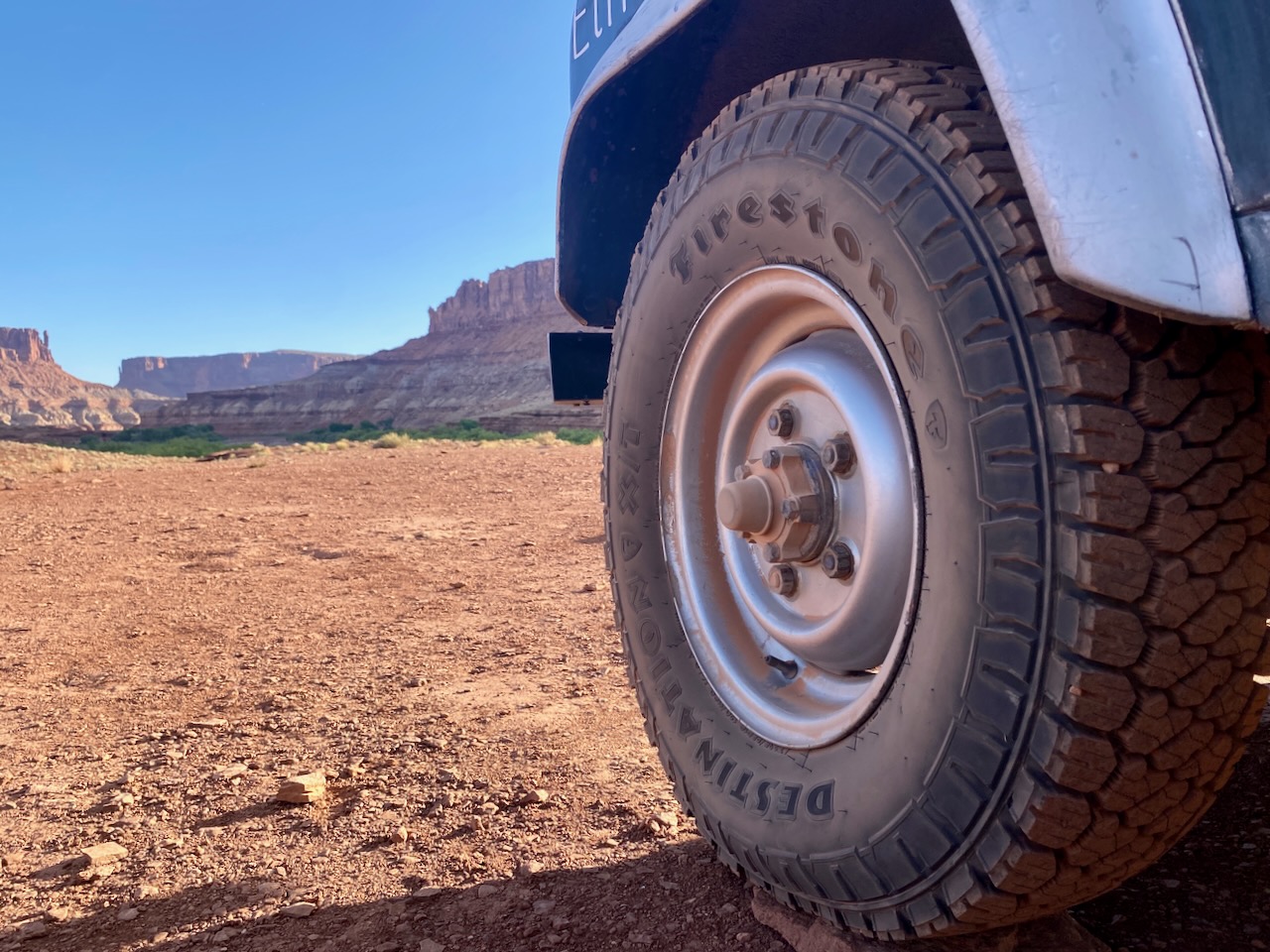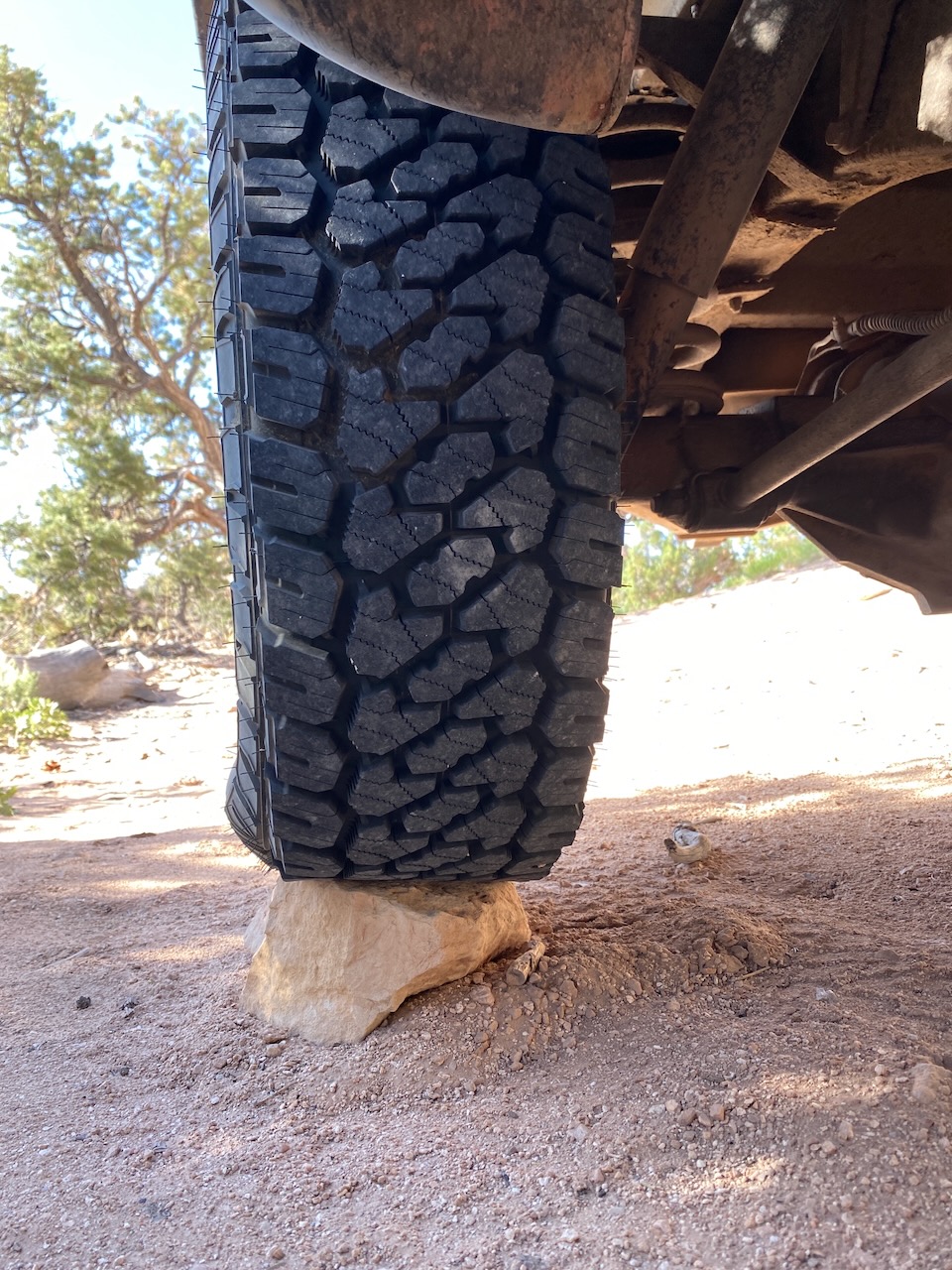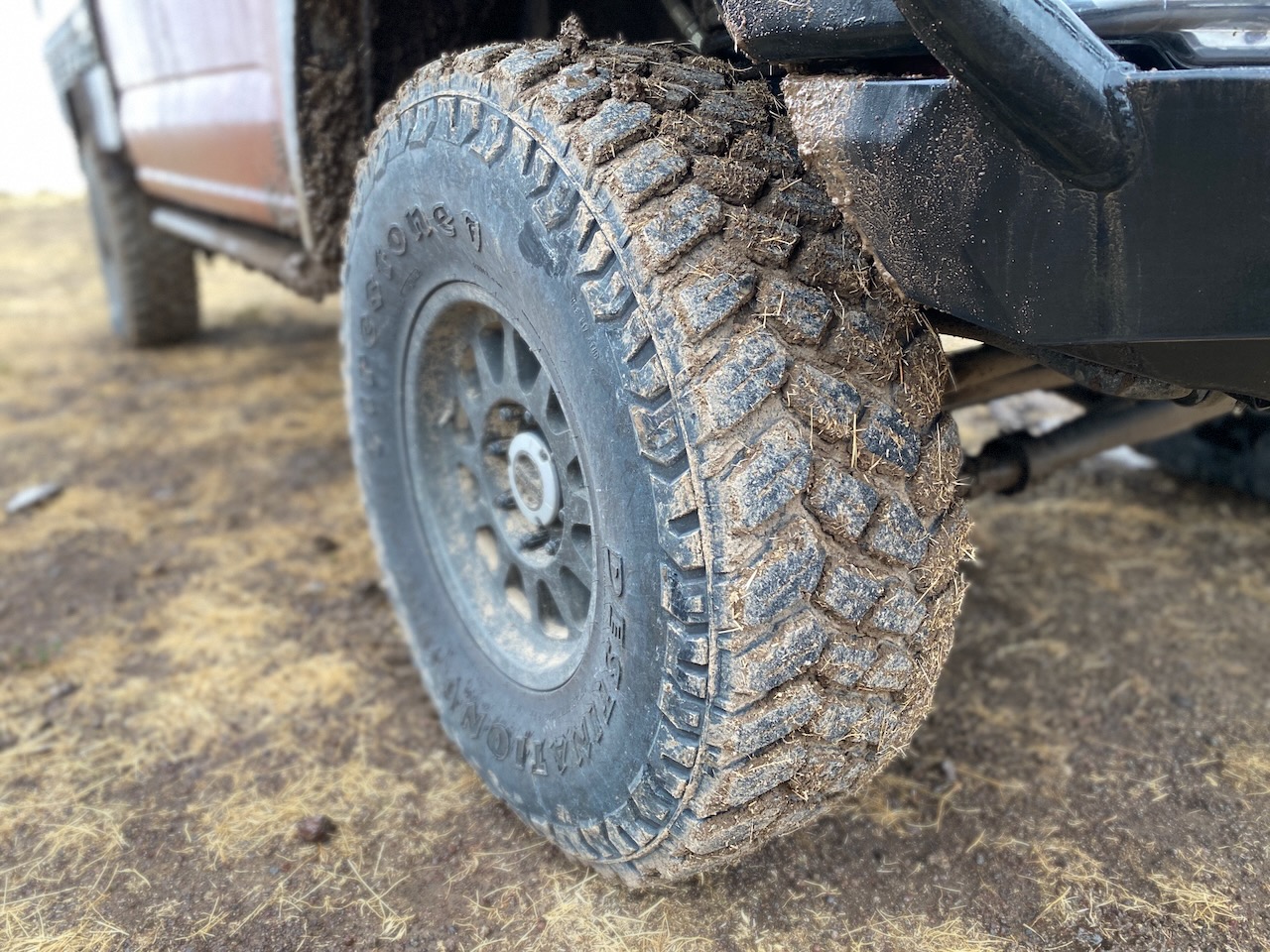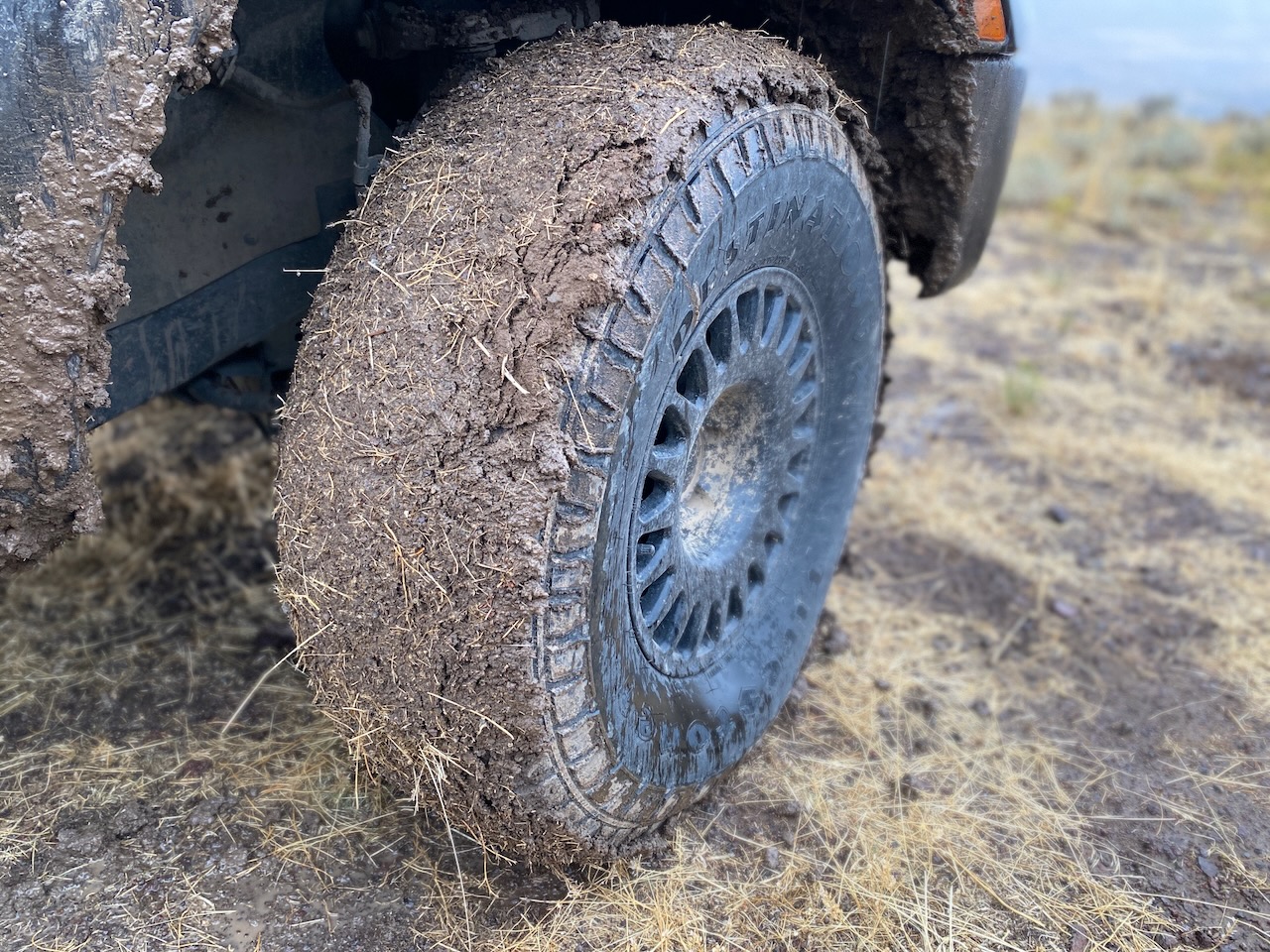In the early years of the twentieth century, Henry Ford and Harvey Firestone started taking regular camping trips together, sometimes with Thomas Edison, and often accompanied by the celebrated naturalist John Burroughs. They would ramble for weeks through the states along the Eastern seaboard in custom Model T trucks outfitted for sleeping, cooking, and off-road exploration. Given the country’s non-existent highway system at the time, nearly all of this travel was by definition “off-road”, as they sought out secluded corners of the American wilderness to commune with nature. They called themselves “The Vagabonds”.
- Henry Ford, Thomas Edison, and Harvey Firestone.
- A custom Ford Model T equipped for camping—or overlanding.
Being the savvy industrialists they were, Ford and Firestone weren’t just in it for the campfire time. They leveraged these outings as a tool for promoting the Model T and Firestone tires, and major American newspapers regularly covered their trips above the fold. In fact, Ford claimed that they had to eventually stop their journeys altogether because they couldn’t go anywhere in the woods without being recognized and mobbed by locals. Much of the “roughing it” aspects of these trips were pure window dressing (they often traveled with fine china, imported wines, and plenty of butlers and chefs in tow); however, there’s no denying that the four Vagabonds helped popularize the idea that the automobile could be a source of freedom and adventure and an escape from modern life—in short, they were overlanding.
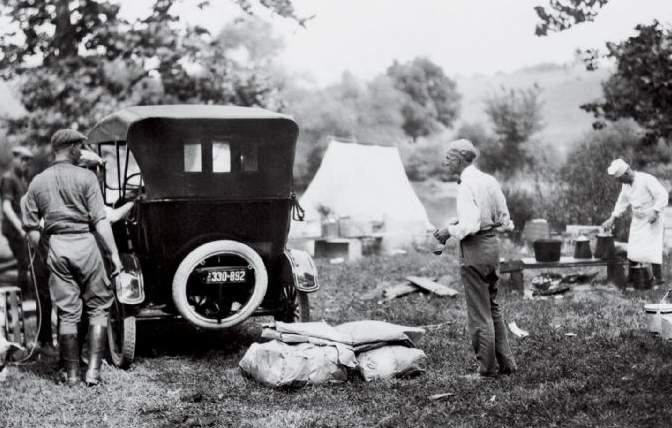
The Vagabonds traveled all over the Eastern seaboard.
This decade of exploration also laid the foundation for the 100-year relationship between Ford and Firestone tires. Firestones were original equipment on Fords of all kinds for nearly the entirety of the twentieth century until the tire maker’s fortunes began to unravel in the late 1980s and early 1990s and the two companies had a very public falling out. Eventually absorbed into Japanese global tire giant Bridgestone, in the years since, Firestone has slowly reestablished itself as a top brand, and its current Destination line of terrain tires is a prime example of why.
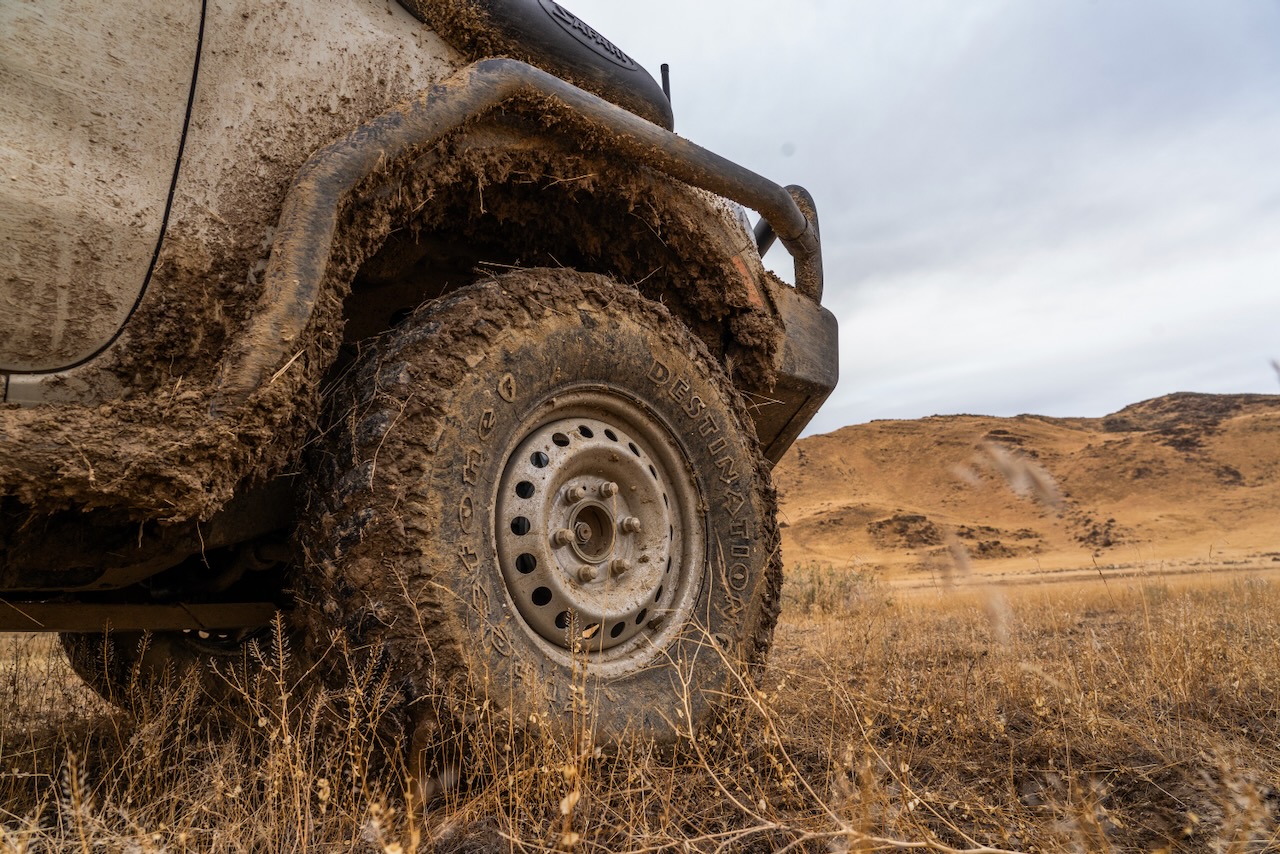
The Firestone M/T2 mud terrain tire.
I had the opportunity to run a set of Firestone Destination X/T all-terrain tires on my 1992 Land Rover Defender 110 for 10 months and nearly 13,500 miles across four seasons of varying road and trail conditions. I was also fortunate to spend a week on- and off-road with the Firestone Destination M/T2 mud-terrain tire fitted to a much more modern rig, a 2022 Ford Ranger XLT FX4. During this adventure into Oregon’s deserts last year, I encountered spring, summer, fall, and winter in the space of just a few days.
The Approach
Tires are a notoriously difficult purchase for the average consumer. It’s not easy to comparison shop, and it’s not easy to measure up your current rubber against tires you’ve owned in the past since most drivers go years and tens of thousands of miles between tire purchases. It’s not easy to comb through the jargon and reams of technical data available online, and it’s not easy to swallow that big price tag for a truly good set of tires when you don’t necessarily know what you’re getting. For many drivers, their tires are simply “fine”, and they rarely think about them unless they fail or it’s time to write that big check.
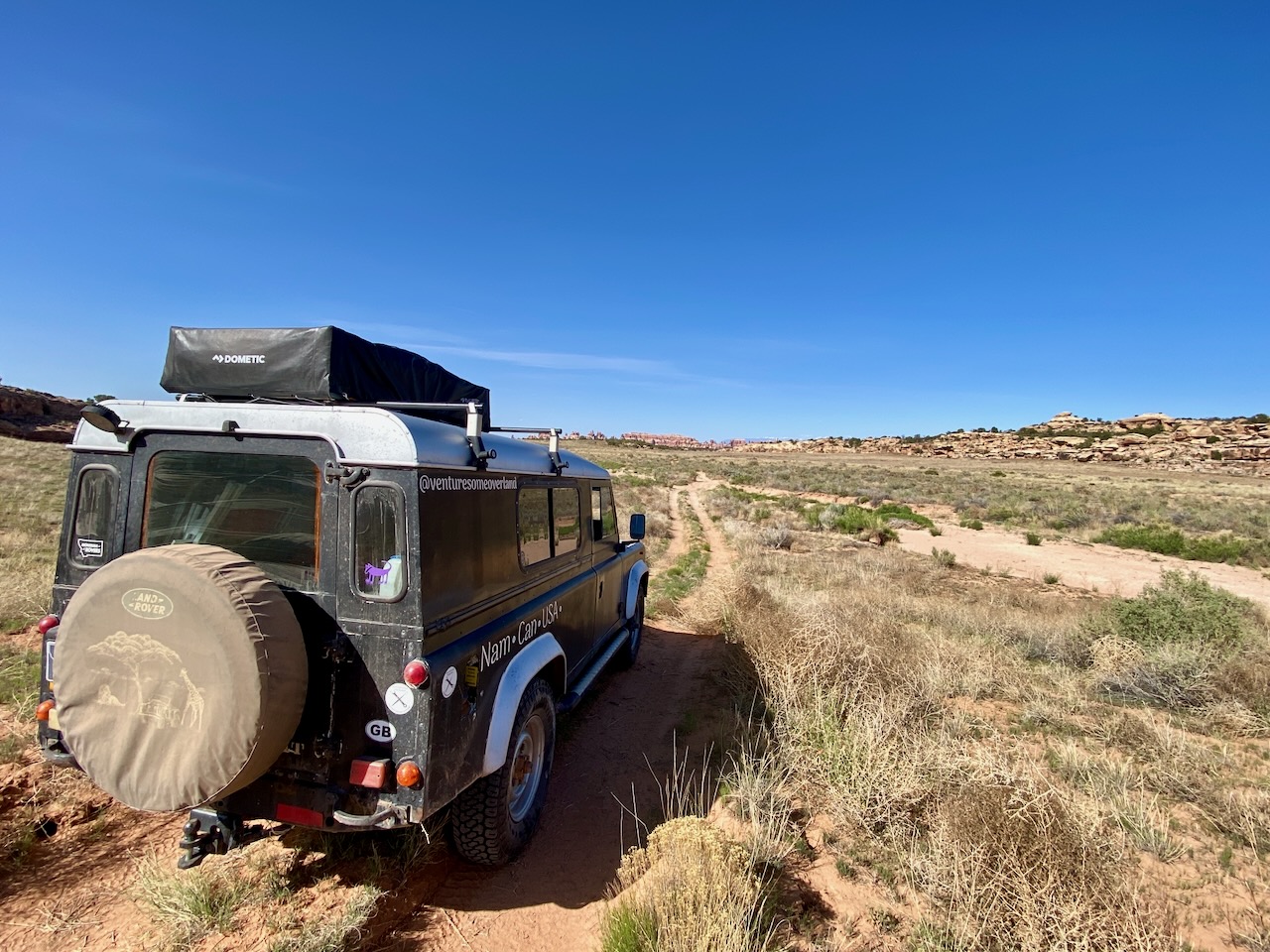
Enthusiasts, however, approach the tire problem very differently—we pour over the specifications, debate performance metrics endlessly online and in person, and cling hard to certain brands or studiously avoid others depending on our experience. Overlanders, in particular, pay keen attention to what’s mounted to our wheels since we need tires to be many things all at once—quiet and efficient for long highway miles or daily commutes, sure-footed in sketchy weather, tenacious off-road, dead reliable, and relatively affordable. After all, many long-term travelers carry their entire homes and lives on those four small contact patches. In the end, tire choice is intensely subjective, even more so now that, across the board, overall quality and consistency in tire construction and performance is as good as it has ever been in history.
Thus, the approach here and in other tire tests on Expedition Portal or Overland Journal focuses not only on highlighting the relevant technical specifications that we feel are important to our audience but also strives to share the genuine experience we have behind the wheel. This is, of course, also subjective, but it does shed some light on how a particular tire could perform for you, given similar contexts.
Long-Term Test: Firestone Destination X/T All-Terrain Tire
The Destination X/T is Firestone’s flagship on- and off-road tire, and I chose to mount the LT 235/85/16 size on my Land Rover’s stock steel wheels. Kudos to Firestone for offering a huge range of sizes for this tire, including ones that fit outdated wheel sizes that are found on more “mature” trucks. X/Ts in this size are E-load range rated, weigh a hair under 40 pounds each, retail for $237, and feature a 50,000-mile warranty. As a value proposition, the X/Ts are squarely in the middle of the market but reasonably priced for a premium tire with the technology it has. It comes in a little over the price of the old BFGoodrich T/A KA02, but well below the asking price of the new T/A KA03, which is not available in this size (for now).
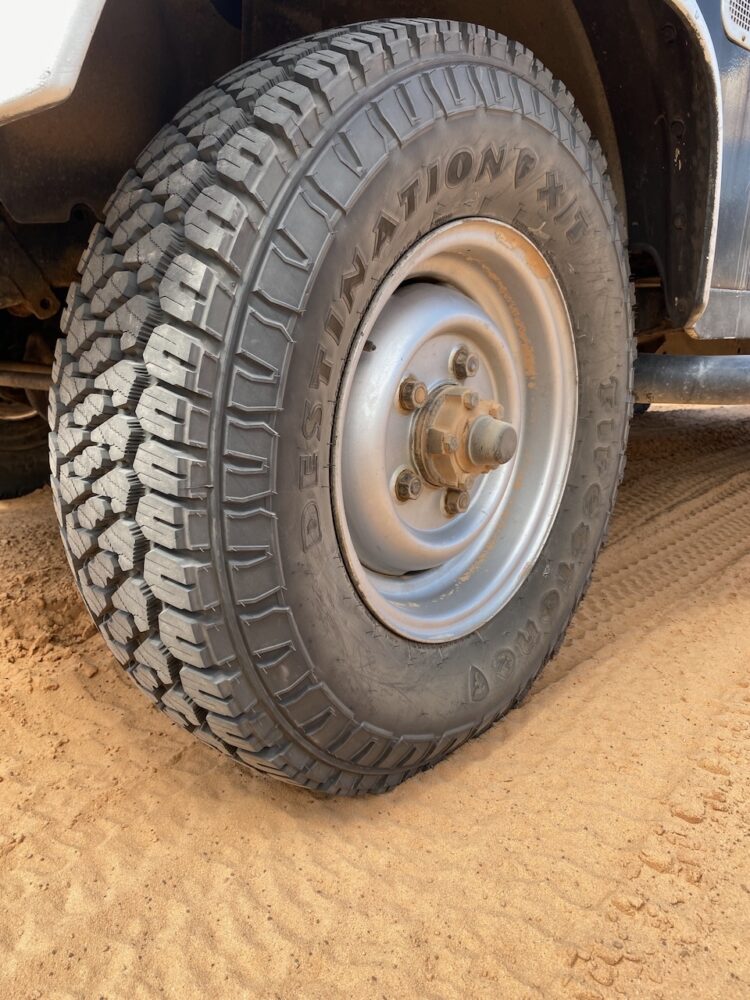
The Firestone Destination X/T all-terrain tire.
The Destination X/T features a fairly aggressive off-shoulder tread design with staggered shoulder lugs. These provide extra biting edges across the face of the tire for enhanced off-road traction, and Firestone’s full-depth interlocking 3D sipe technology ensures even wear and consistent performance throughout the tire’s lifespan. These interlocking grooves help in finding grip in ice and snow, and open shoulder slots evacuate water, reducing the risk of hydroplaning and boosting wet weather traction. Firestone claims its rubber compound resists tread loss over previous models and competing brands, and, indeed, in nearly a year of hard use on the X/Ts, I see almost no evidence of chipping or tearing. Sidewall durability has also proven to be very impressive, shrugging off cuts and abrasions.
The nature of an “all-terrain” tire is one of compromise—its design is inherently meant for a wide variety of contexts, but this jack-of-all-trades identity means it may struggle at the extremes of any one condition or another. I certainly subjected the Destinations to a variety of extremes over 10 months and thousands of miles, and they never put a tread wrong.
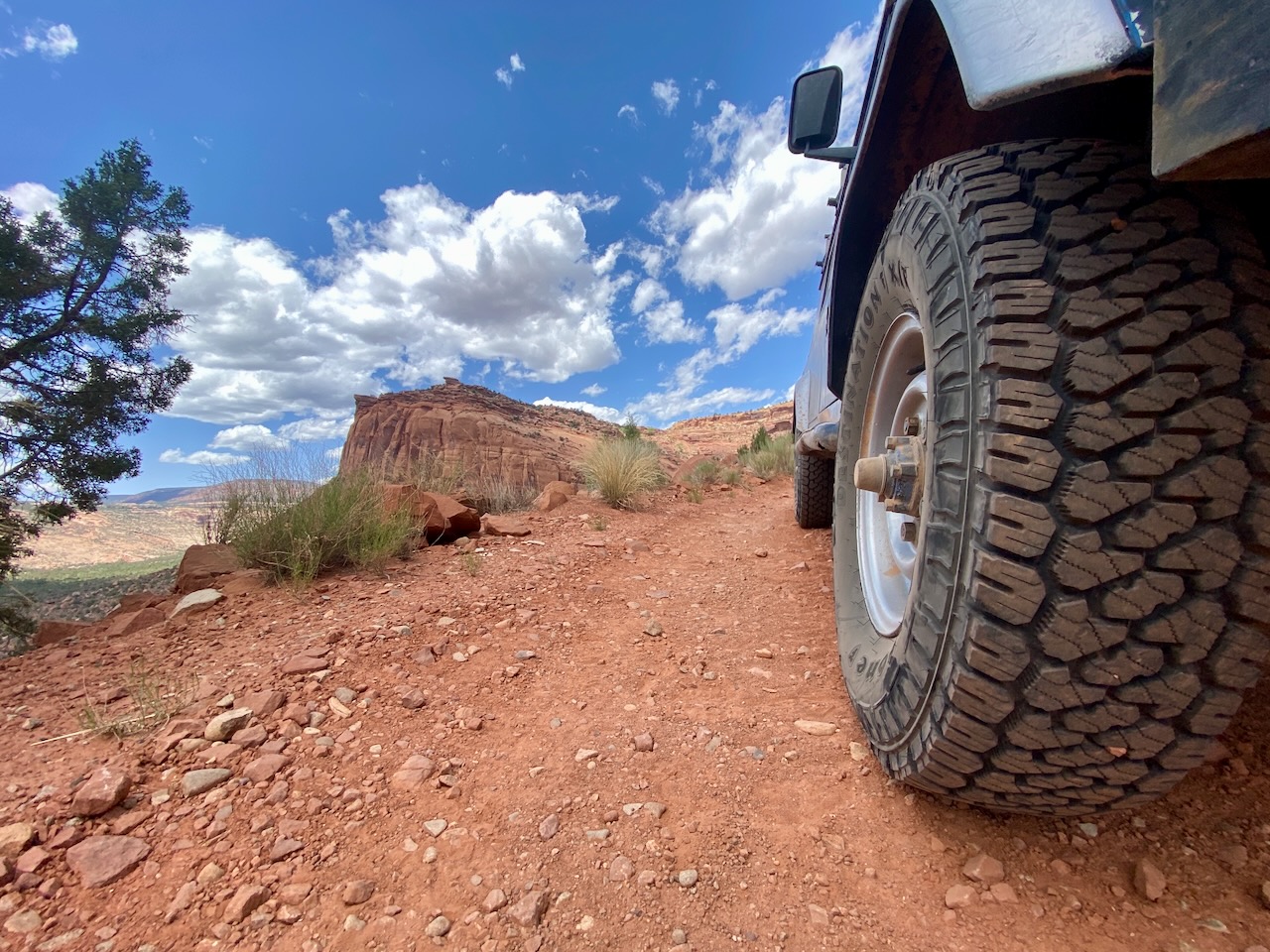
First to consider is this tire’s outstanding highway manners. If we’re honest with ourselves, most of the travel—whether it’s long-term or just for a weekend—that overlanding entails falls on the asphalt and concrete slabs that make up our highway system. Therefore, a major consideration for me when choosing an A/T tire is its behavior as a regular urban commuter and Interstate cruiser. This goes double if your adventure rig does duty as a daily driver during the work week. An early model Defender is not a paragon of on-road handling, and it plays a symphony of noise, vibration, and harshness at speeds above 50 miles per hour. Despite this, I could tell the X/Ts rolled quietly without tramlining on worn or off-camber roads. In my non-ABS truck, braking performance has remained consistent as the tires have worn, with good surface friction feedback. Breakaway is predictable, and the tires resist grabbing erratically at the limits of traction with little sidewall deflection.
The X/T’s mud and snow rating (including the 3PMSF “mountain snowflake” extreme winter rating) was put to the test during a severe Montana winter and a sloppy spring. These tires shed mud relatively effectively (more on this below in the review of the M/T2 mud-terrain tire), but they shine in the snow. I found them to handle equally well in deep powder as well as in hard-packed and icy conditions; slippery road braking, in particular, inspired a lot of confidence. The rubber formulation stays pliable in extra-cold weather, which is remarkable given how durable the tread blocks have proven to be over many miles of hard off-road work.
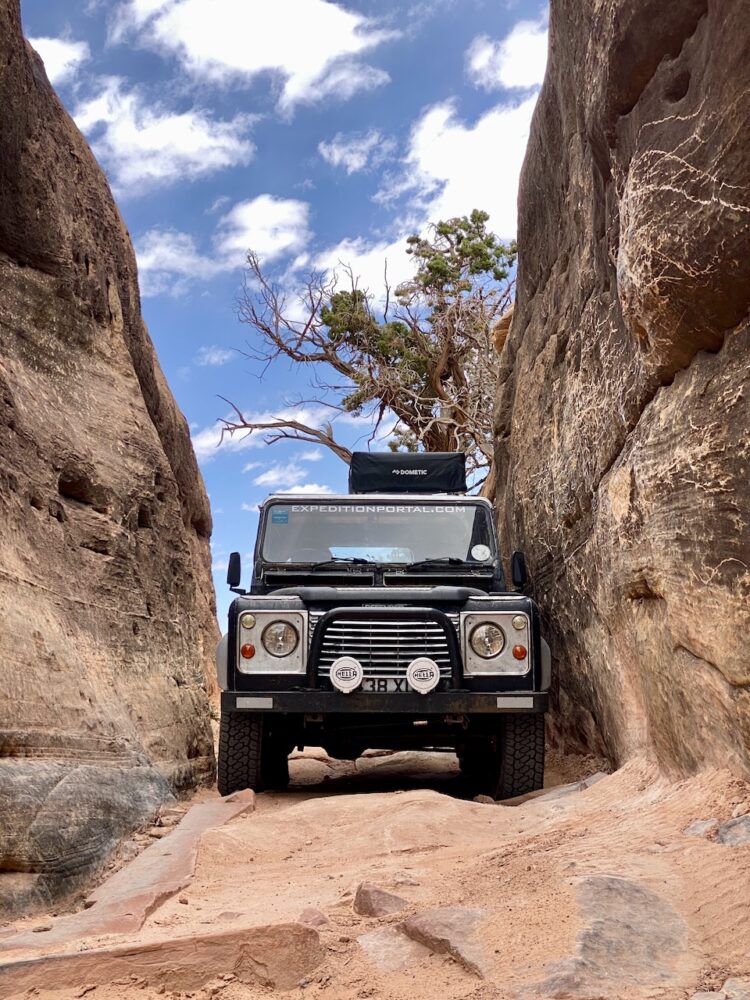
I subjected the Destination X/Ts to a wide variety of unpaved roads and barely maintained trails across nine Western states and one Canadian province. The bulk of my off-road travel was in the Four Corners region, where I found deep sand, slickrock, endless washboard, and serrated stones and gravel. I found these tires to be exceptionally sensitive to pressure adjustments—shifting inflation 3 or 4 pounds per square inch often made the difference between having plenty of traction and spinning my wheels. At the lowest pressures, the X/Ts have excellent deformation characteristics, and whatever magic Firestone put in the sidewalls held visible damage at bay. I was pleasantly surprised at their rock-crawling performance deep in the bowels of Canyonlands National Park’s Needles District, where I subjected my poor Defender to the trials of the notorious Elephant Hill. The X/Ts found traction where I least expected it.
- The Firestone Destination X/T has excellent deformation characteristics.
Other X/T adventures involved recovering a Jeep Grand Cherokee 4xe buried to the frame in a sand dune in Arizona, sailing through huge puddles on Washington’s seaside US101 highway during a storm raging off the Pacific, and scrambling along two tracks strewn with loose, razor-edged granite in the Colorado Rockies. Through all of this, I never found the Firestone X/T wanting and never suffered a puncture or failure of any kind. They have worn remarkably evenly on my notoriously hard-to-align Land Rover, and I see no reason why they won’t continue to carry me confidently for many thousands of miles more. In my opinion, the Destination X/T is one of the most reliable and capable all-terrain tires currently available.
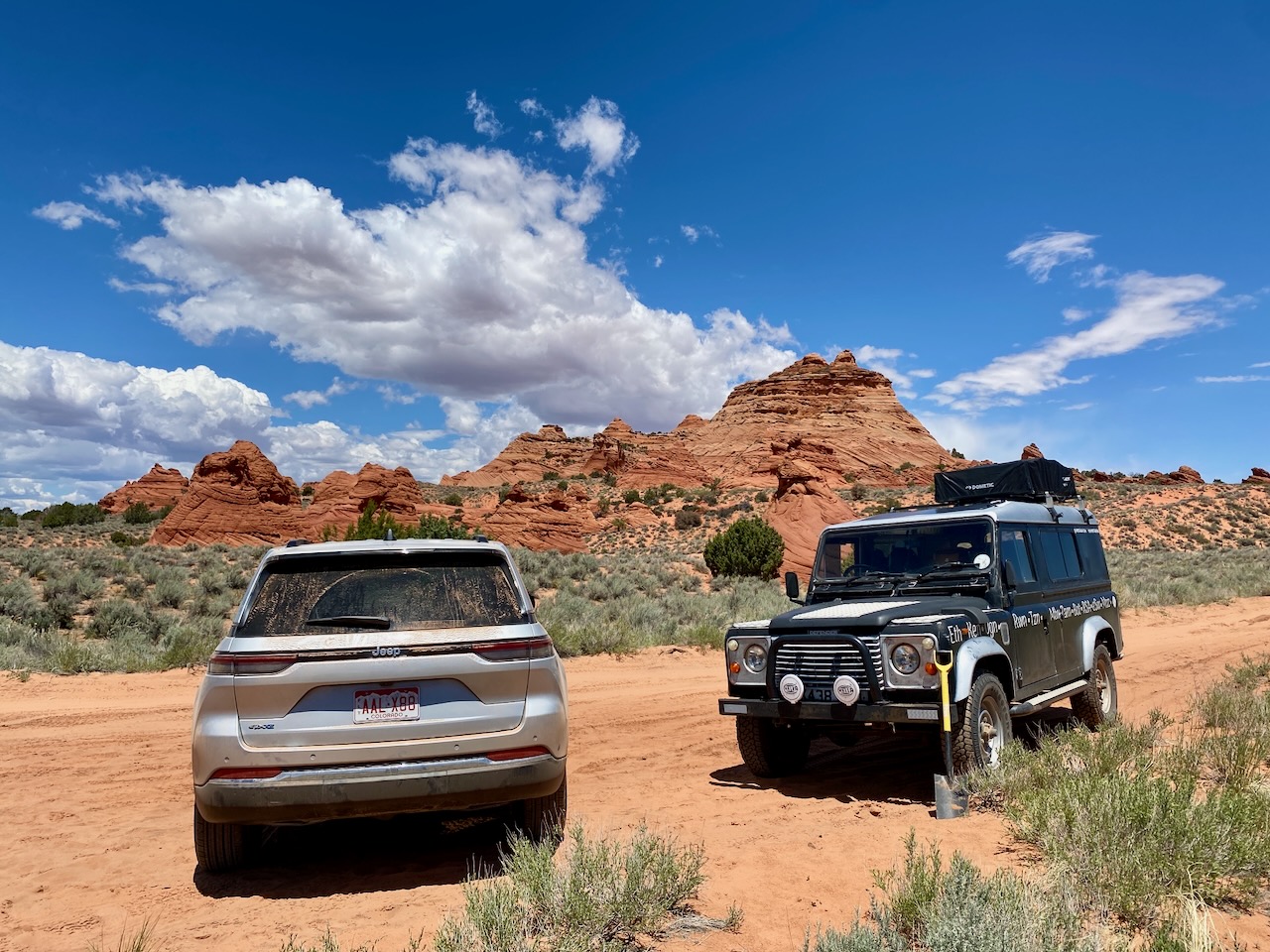
The Firestone X/Ts helped me rescue a German couple driving a heavy Jeep Grand Cherokee 4xe from a sand dune near Arizona’s White Pocket.
Weekend Review: Firestone Destination M/T2 Mud-Terrain Tire
In October of 2024, I swapped the keys to the Defender for a 2022 Ford Ranger XLT equipped with Firestone’s Destination M/T2 mud-terrain tire. I would get a handful of days with the Ranger, commuting in Portland, Oregon traffic and hammering on the highway paired with a short expedition to the state’s Owyhee country, far to the East near the Idaho border. This adventure was all on Firestone’s invitation, and our small cadre of travelers in a variety of rigs encountered four seasons’ worth of conditions in those few short days.
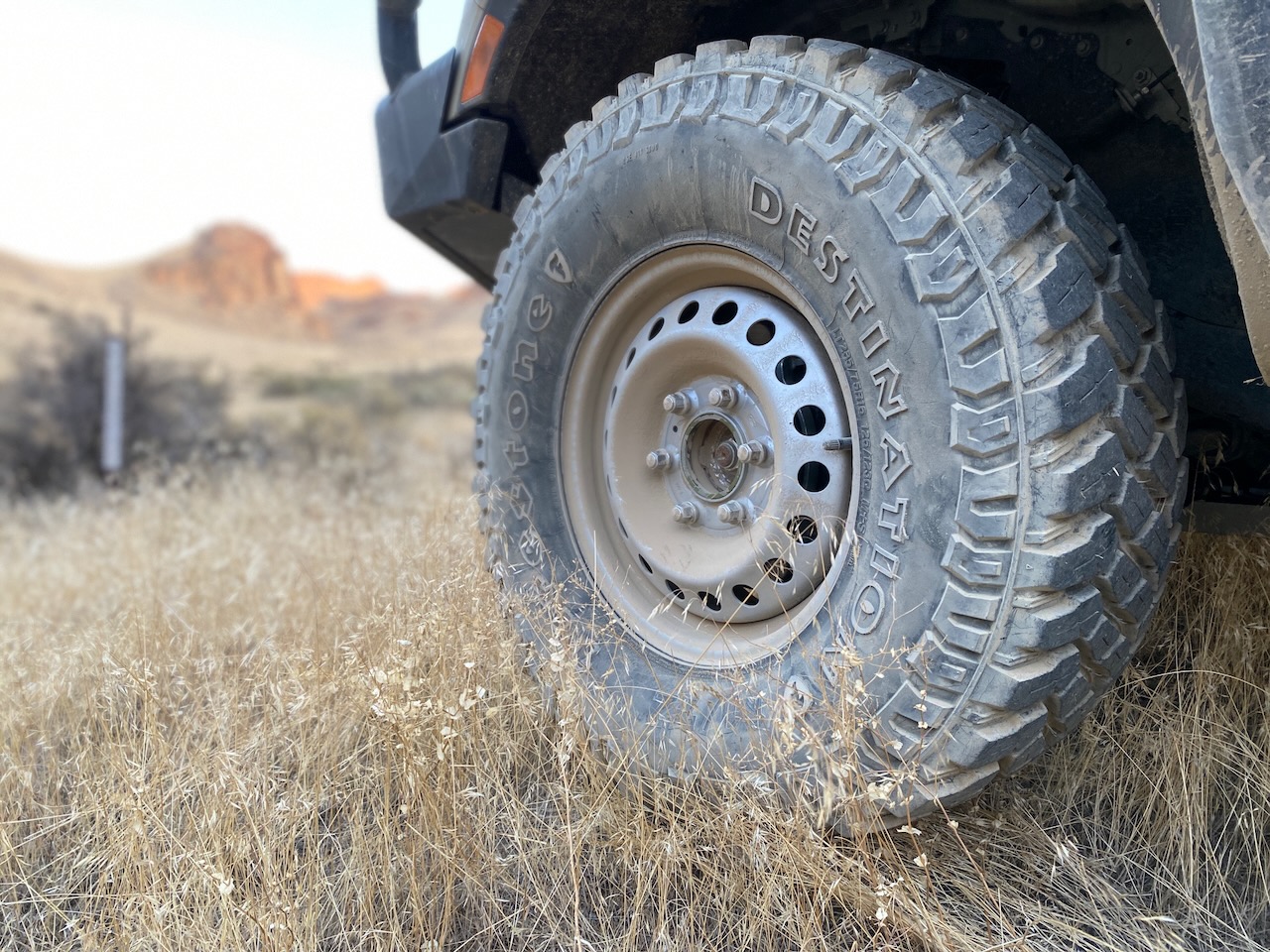
The Firestone Destination M/T2 mud-terrain tire.
The M/T2s mounted on the Ford’s factory steelies were the LT 285/75/16 size, not too big, not too small for the pickup’s uprated OME BP51 suspension system. These tires are E load range rated, have three polyester sidewall plies, weigh a stout 60 pounds each, and cost $339. As is typical with specialized mud-terrain tires, there is no comprehensive limited-mileage warranty available. BFGoodrich’s T/A KM3 mud terrain rings up at $312 in the LT 285/75/16 size.
In terms of specifications, the Destination M/T2 features an aggressively open tread pattern with deep, interlocking, and ramped blocks designed to enhance traction in terrains with deep mud, loose dirt, and rocky trails. Firestone’s “mud and stone rejector” technology clears debris from the tread, enhancing performance in muddy conditions and preventing stone retention. The aggressive upper lugs offer some added durability and stronger resistance to chips and tears. Ditto for the sidewall debris shield, which also prevents trail detritus from wedging between the tire and the wheel, potentially causing damage and pressure loss. These Destination mud-terrains are also pinned for studs, making up for any shortcomings in winter conditions, since the M/T2 is minimally siped.

The foray into Oregon’s deserts started out in sunshine and dust and was beset in fast succession with freezing temperatures and torrential autumn rains. The 400-mile haul between Portland and our trail jump-off point offered an opportunity to evaluate the M/T2 on the highway. As is usually the case with mud-terrains, there is certainly some extra cabin noise with the Destinations, and the weight penalty on each corner along with extra rolling resistance certainly contributes to a loss of fuel economy over an all-terrain tire. However, directional stability at speed was very good. At rest at a stop sign, as I turned the wheel I could hear and feel the tread blocks squirming under the Ranger’s weight.
But nobody buys mud-terrains for hypermiling or quiet commutes; they’re for when the going gets really rough. Our loop across the roads and tracks on the BLM lands surrounding the Owyhee Reservoir offered us primarily very dusty conditions riven with sharp volcanic rock. However, the silty road surfaces turned instantly to cotton-mud goo with just a short rain storm, so as luck would have it, mud was often on the menu. The Destination M/T2’s performance in all these conditions was exemplary, especially in the muck. Particularly in comparison with the one truck in our convoy that was wearing Destination X/Ts, we could see just how effective the “rejector” technology was in shedding this persistent mud that stuck to everything but itself.
- The effectiveness of Firestone’s “mud and stone rejector” tech is apparent when we compare the M/T2 (left) to the X/T (right) in muddy conditions.
We pushed our trucks and our rubber hard on this trip, and none of the 24 tires that we rode on experienced any kind of failure or even a shred of sidewall or tread damage. Nobody got stuck. Honestly, this was to be expected, but not having to worry about the stability or capability of our tires allowed us to relish the difficult terrain—the slick and sketchy downhills, the water crossings, the mud bogs—all of it was fun and free from worry. And isn’t that the point when choosing a tire for your adventure vehicle?
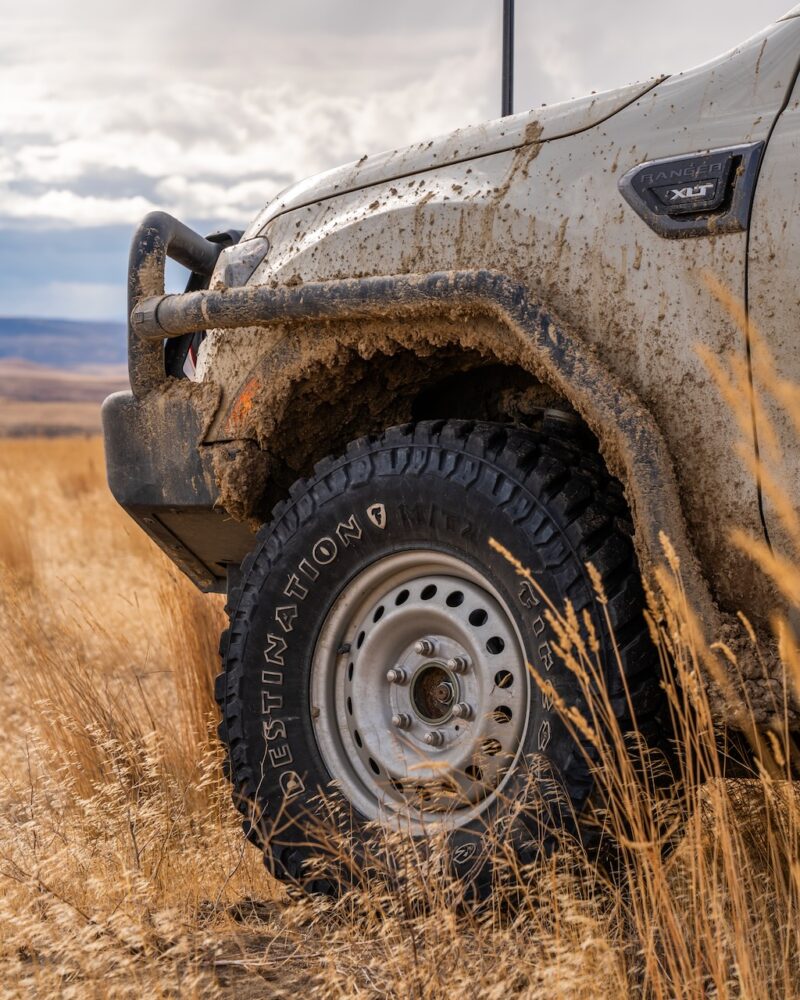
Images: Ford, Stephan Edwards, Nick Jaynes, Firestone Tires
Read more: Onions and Sage :: Into Oregon’s Owyhee Country
Our No Compromise Clause: We do not accept advertorial content or allow advertising to influence our coverage, and our contributors are guaranteed editorial independence. Overland International may earn a small commission from affiliate links included in this article. We appreciate your support.


